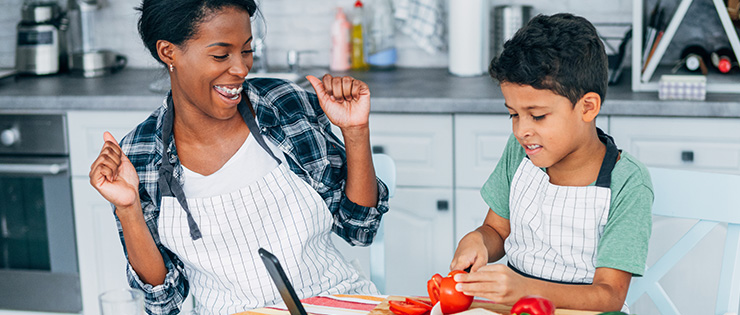
You’ve probably heard that eating vegetables is good for you. In Australia, the recommendation for adults is to eat 5 servings of vegetables per day to reduce the risk of chronic diseases and certain cancers. A serve of vegetables is either 1 cup of raw vegetables (like a salad) or ½ a cup of cooked vegetables (like blanched vegetables or wilted spinach). For children, the daily recommended vegetable intake varies according to age and you can check this at eatforhealth.gov.au. Sadly, the Australia Health Report 2018 found that only 5% of Australian adults had adequate fruit and vegetable intake.
I’m trying not to blow my own trumpet, but I would eat 5 servings of vegetables most days and my family would get the recommended serves including my 3-year-old. I’m not expecting a medal in the shape of a carrot, though it would be nice – but I have found easy ways to get enough veggies into our diets without it being a massive ordeal.
Some of my tips I often give my patients
Load your meals with veggies
I often share easy, kid-friendly recipes on my Instagram account. Honestly, my meals are nothing special (I’m no Nigella) but they're veggie-packed. I encourage people to ignore recipe norms and to throw whatever you have lying around into your meals. Some meals make for easy vegetable loading – my favourites are lasagne, pasta sauces, frittatas, tuna slice, and Mexican burrito fillings. I will add silverbeet, grated zucchini, grated carrot or peas, and corn to most meals! You can never, ever, have too many veggies in a meal!
What about breakfast
Try sneaking some veggies into breakfast to get the serves in early in the day! Baked beans (particularly low salt ones) are great or wilted spinach with eggs is another winner.
Beans and lentils count in veggie serves
Canned beans are an easy (and cost-effective) way to get some vegetables into the diet. Lacing these in your lunch box or dinner is a nice way to increase the vegetable serves. I always have cans (and cans) of red beans, chickpeas, and lentils in the house. I add lentils to lasagne and pasta sauces and will often make Mexican beans for an easy, family-friendly meal.
Incorporate vegetables into snacks
My daughter and I often eat carrots, and cucumber or raw green beans with dip and cucumber. Olive, tomato and cheese skewers are also a favourite snack.
Prepare meals ahead and pack lunches for work if you can
If you have vegetable loaded meals in the fridge ready to go, it’s harder to turn to take out or other options. When you come home from work exhausted with tired, grumpy children it’s easier to warm something up and serve it rather than think about dinner and how you can get veggies in. I do the work when I have time and energy so it's less exhausting later
Frozen and canned vegetables
When you're time-poor these are a great option.
Getting enough vegetables in has lots of health benefits – it can help with weight management preventing obesity and obesity-related disease. With a good diet high in fruit and vegetables, you can reduce your risk of chronic diseases like high blood pressure, type 2 diabetes and fatty liver and reduce your risk of certain cancers like bowel cancer. A good diet can make a world of difference to you and your family's health.